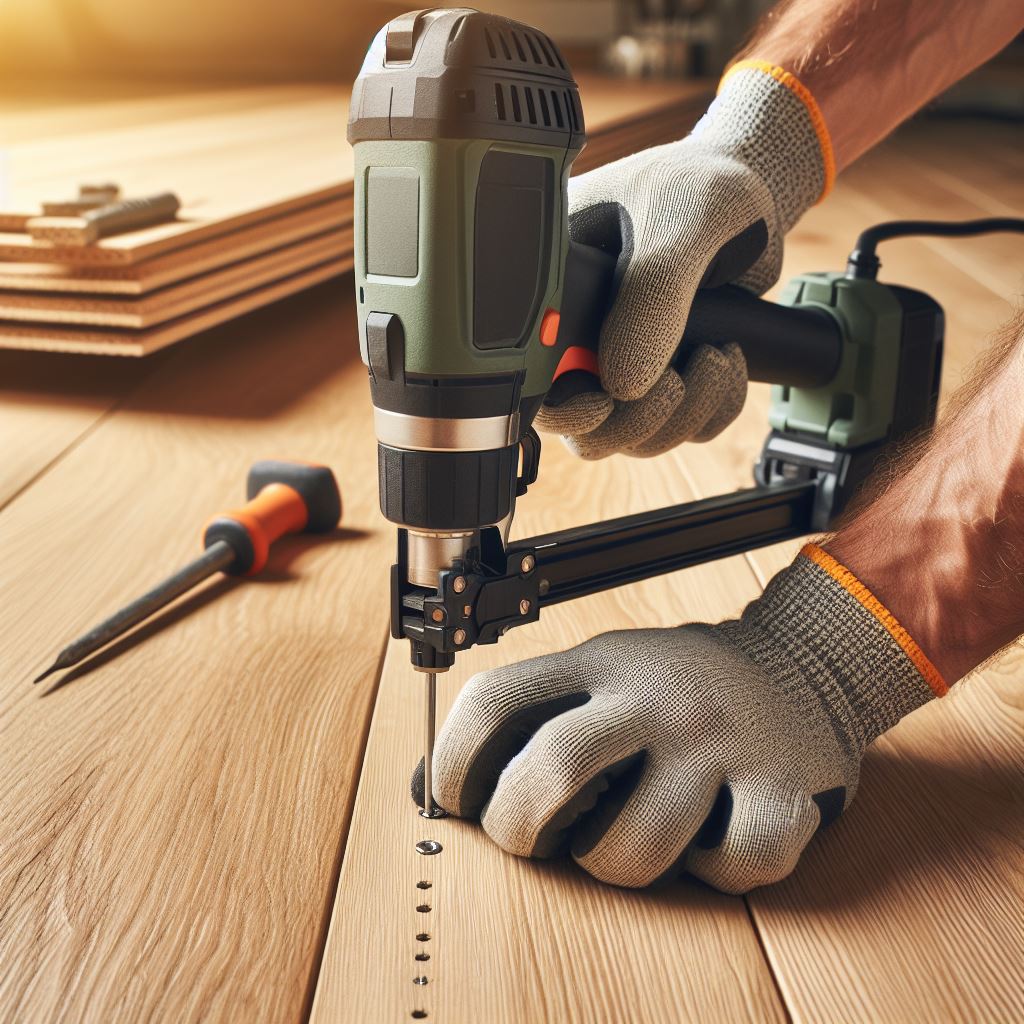Embarking on a DIY project to sand hardwood floors by hand can be both rewarding and challenging. Whether you’re looking to restore the natural beauty of your floors or prepare them for a fresh coat of stain, understanding the basics of hand-sanding is crucial. Unlike machine sanding, which can sometimes be too aggressive, hand-sanding allows for a more controlled and precise approach, ensuring that your floors maintain their integrity and charm.
Before you dive in, it's important to gather the right tools and materials. You’ll need various grits of sandpaper, a sanding block, knee pads, a vacuum cleaner, and a tack cloth. Each of these tools plays a vital role in achieving a smooth, even finish. Additionally, having a clear plan and knowing the correct techniques will save you time and effort in the long run.
If you're unsure about tackling this project on your own or need professional advice, don't hesitate to request a free estimate or email us at sales@paradise-spaces.com. Our team at Paradise Spaces is here to help you every step of the way, ensuring your hardwood floors look their best.
Essential Tools for Hand Sanding
To successfully sand hardwood floors by hand, having the right tools on hand is essential. Investing in quality tools not only makes the job easier but also ensures a professional-looking finish. Here’s a list of the essential tools you’ll need:
- Sandpaper: A variety of grits from coarse (40-60 grit) to fine (120-220 grit) will help you tackle different stages of sanding, from removing old finishes to smoothing the surface.
- Sanding Block: This tool provides a firm backing for the sandpaper, ensuring even pressure and consistent results. It’s especially useful for flat surfaces and edges.
- Detail Sander: For those hard-to-reach areas and intricate details, a small hand sander can be a lifesaver. It allows for precise sanding in corners and around edges.
- Vacuum Cleaner: Keeping the work area clean is crucial. A vacuum with a brush attachment is perfect for removing dust and debris between sanding sessions.
- Tack Cloth: This sticky cloth is used to wipe down the floor after sanding to remove any remaining dust particles, ensuring a clean surface for staining or sealing.
- Knee Pads: Sanding floors by hand requires a lot of time on your knees. Comfortable knee pads will protect your joints and make the process more bearable.
- Protective Gear: Safety goggles and a dust mask are essential for protecting your eyes and lungs from dust and debris.
By equipping yourself with these essential tools, you’ll be well-prepared to take on your hand-sanding project with confidence and achieve a beautiful finish.
Preparing Your Hardwood Floor

Before you begin to sand hardwood floors by hand, thorough preparation is key to achieving the best results. Proper preparation ensures that the sanding process goes smoothly and that you avoid any potential pitfalls. Here’s how to prepare your hardwood floor:
- Clear the Room: Remove all furniture, rugs, and any other items from the room. This will give you an unobstructed workspace and protect your belongings from dust and damage.
- Inspect the Floor: Carefully examine the floor for any nails, staples, or screws that may be protruding. These can damage your sandpaper and tools. Use a hammer or screwdriver to remove or countersink any fasteners.
- Repair Damages: Look for any loose boards, cracks, or holes in the floor. Secure loose boards with nails or screws, and fill cracks or holes with wood filler. Allow the filler to dry completely before sanding.
- Clean the Floor: Sweep or vacuum the floor to remove loose dirt and debris. Follow up with a damp mop to eliminate any remaining dust. Ensure the floor is completely dry before you begin sanding.
- Protect Adjacent Areas: Use painter’s tape and plastic sheeting to cover doorways, vents, and any other areas you want to protect from dust. This will help contain the mess and make cleanup easier.
- Plan Your Sanding Path: Decide on the direction you will sand in. Typically, you should sand in the direction of the wood grain to avoid scratches and achieve a smoother finish.
By taking the time to properly prepare your hardwood floor, you’ll set the stage for a successful and efficient sanding project, ultimately leading to a beautifully restored surface.
Step-by-Step Hand Sanding Process

Once your hardwood floor is prepared, it's time to begin the hand sanding process. Follow these steps to ensure a smooth and even finish:
- Choose the Right Sandpaper: Start with a coarse grit sandpaper (around 40-60 grit) for initial sanding. This will help remove old finish and any deep scratches. Gradually move to finer grits (80-120 grit) to achieve a smoother surface.
- Sand the Edges and Corners: Begin with the edges and corners of the room. These areas are harder to reach with larger tools, so using a sanding block or a detail sander will be more effective. Work in small sections and sand in the direction of the wood grain.
- Sand the Main Floor Area: Once the edges and corners are done, move on to the main floor area. Use a floor sanding block or a handheld sander for larger sections. Apply even pressure and sand in long, overlapping strokes, following the direction of the wood grain.
- Check Your Progress: Periodically stop to check your progress. Run your hand over the sanded area to feel for any rough spots or uneven surfaces. If necessary, re-sand these areas to ensure a consistent finish.
- Vacuum and Wipe Down: After completing the sanding process, thoroughly vacuum the floor to remove all dust and debris. Follow up with a tack cloth or a damp microfiber cloth to wipe down the surface, ensuring it is clean and dust-free.
- Repeat if Necessary: Depending on the condition of your floor and the desired finish, you may need to repeat the sanding process with finer grit sandpapers. This will help achieve an ultra-smooth finish.
By carefully following these steps, you can achieve a beautifully sanded hardwood floor that is ready for staining or sealing. Patience and attention to detail are crucial to ensuring the best results.
Tips for Achieving a Smooth Finish

Achieving a smooth finish when sanding hardwood floors by hand requires more than just following the basic steps. Here are some essential tips to help you attain a flawless result:
- Keep Your Sandpaper Clean: Sandpaper can quickly become clogged with dust and debris, reducing its effectiveness. Clean your sandpaper regularly by tapping it or using a sandpaper cleaning block.
- Use the Right Technique: Always sand in the direction of the wood grain to avoid scratches and gouges. Applying even pressure and moving in long, overlapping strokes will help ensure an even finish.
- Change Grits Gradually: Transitioning from one grit to another should be done incrementally. This means moving from a coarse grit to a medium grit and then to a fine grit. Skipping grits can leave scratches that are difficult to remove.
- Inspect Frequently: Regularly inspect your progress by running your hand over the sanded surface. This will help you identify any rough spots or imperfections early on, allowing you to address them promptly.
- Maintain Good Lighting: Proper lighting is crucial for identifying imperfections and ensuring a consistent finish. Use a bright, adjustable light source to illuminate the floor as you work.
- Stay Patient and Take Breaks: Hand sanding can be a physically demanding task. Taking regular breaks will help prevent fatigue and maintain the quality of your work. Patience is key to achieving a smooth, even finish.
- Finish with a Tack Cloth: After sanding, use a tack cloth to remove any remaining dust particles from the surface. This will help ensure that the floor is perfectly clean and ready for staining or sealing.
By incorporating these tips into your hand sanding process, you can achieve a professional-quality finish that enhances the beauty and longevity of your hardwood floors. Remember, attention to detail and patience are your best allies in this project.
Post-Sanding Care and Maintenance

Once you've achieved that smooth finish on your hardwood floors, it's essential to take steps to maintain their beauty and durability. Here are some key post-sanding care and maintenance tips:
- Clean Thoroughly: After sanding, thoroughly clean your floor to remove all dust and debris. Use a vacuum with a soft brush attachment and follow up with a damp mop. Ensure the floor is completely dry before moving on to the next steps.
- Apply a Protective Finish: Whether you choose a polyurethane, oil-based, or water-based finish, applying a protective layer is crucial. This not only enhances the wood's natural beauty but also protects it from scratches and wear.
- Use Rugs and Mats: Place rugs or mats in high-traffic areas and at entry points to minimize dirt and moisture brought onto the hardwood floor. This will help prevent scratches and extend the life of your finish.
- Maintain a Regular Cleaning Schedule: Sweep or vacuum your floors regularly to keep them free from dust and grit that can cause scratches. Use a damp mop with a hardwood floor cleaner for deeper cleaning.
- Control Indoor Climate: Maintain a stable indoor climate with consistent humidity levels. Wood expands and contracts with changes in humidity, so using a humidifier in winter and a dehumidifier in summer can help maintain your floor's integrity.
- Address Spills Promptly: Clean up any spills immediately to prevent water damage and staining. Use a soft, dry cloth to blot the spill and avoid using harsh chemicals.
- Inspect and Refinish Periodically: Over time, your floor's finish may wear down. Inspect your floors regularly and consider refinishing them every few years to maintain their appearance and protection.
By following these post-sanding care and maintenance tips, you can ensure your hardwood floors remain stunning and durable for years to come. If you need professional assistance or have any questions about maintaining your hardwood floors, request a free estimate or email us at sales@paradise-spaces.com.
